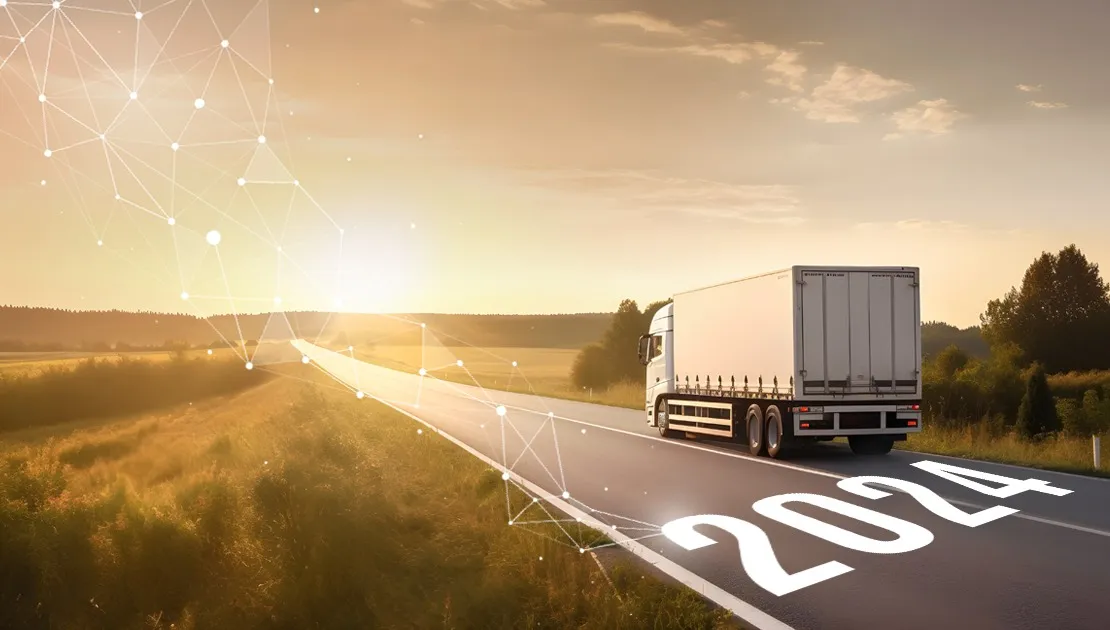Video telematics in 2024 - emerging trends and success strategies
As we step into 2024, the landscape of video telematics is rapidly evolving, presenting both new challenges and exciting opportunities. In this dynamic arena, understanding the emerging trends and adopting effective success strategies is crucial for staying ahead. In this blog, we will dive into the key trends shaping the world of video telematics in 2024 and explore strategic approaches to being more successful in video telematics.

Growing adoption, increasing competition
The good news is that video telematics is set to continue its growth story in 2024 - commercial vehicle fleets and drivers understand the benefits of video telematics very well. For many telematics service providers, video is the next GPS. It is as foundational a technology marking a seismic shift in how fleets are run as location tracking once did. A welcome change from last year will be that the growth will pick up outside of North America as well - particularly LATAM, Europe and APAC.
With increasing opportunities comes increased competition. A few years back, having edge AI and being able to provide in-cabin coaching was the differentiating factor. Presently, most solutions claim to have edge AI. To differentiate, many companies are introducing ‘features’ whose value can be questionable and are possibly crossing the line for the drivers from useful to annoying. The natural question that comes up - what should the ideal video telematics solution look like and what should telematics service providers looking to sell more video telematics do?
Prioritize outcomes over features
In the increasingly competitive world, when a TSP salesperson talks about features, a sophisticated fleet buyer will ask “so what?”. Being able to answer this question effectively will be the key to success. For example, if in-cabin coaching is available for distracted driving, are you able to see a reduction in distracted driving over time?
User experience becomes key. Workflows become all-important to ensure that the fleet personnel use the solution in the intended way and benefit from reduced risk and improved safety in the form of outcomes like reduced risky events, reduced crashes, improved CSA (Compliance, Safety and Accountability) scores, better driver engagement, better fuel economy, etc.
Driver coaching and Driver engagement - 2 sides of a coin
With edge AI present in many solutions, the cameras will provide audible alerts to the driver upon risky driving being detected. However, too much of this can be annoying and drivers may tune out resulting in these notifications becoming useless.
Rather than dumping risky driving data and event videos on a fleet and expecting them to figure it out, a good solution would be to use technology to make sense of the data. Using AI to determine which risky driving events are particularly severe, and using driver ID to provide personalized coaching recommendations will help the fleets reap the benefits of edge AI. Without an intuitive and easy-to-use coaching workflow, the picture is only half complete.
Many drivers and some fleets feel personalized driver coaching is too intrusive and drivers feel ‘picked on’. Designing the coaching workflow in a way that the driver experience is front and center is crucial for the success of driver coaching. Recognizing what a driver did well and not focusing only on what the driver can do better is important. Gamification through driver app and incentives for safe driving can benefit fleets greatly.
Craft a winning strategy in video telematics for 2024
Here are the 4 things in our opinion that will help telematics service providers benefit from the increasing demand for video telematics:
Innovate where it matters
Being able to reduce crashes and retrieve video footage of a crash easily and reliably are the 2 most important things to a fleet from an outcome perspective. Being able to detect whether a driver is smoking or vaping is nice from a technology perspective, but it may not be the most important problem to solve. Innovating in areas that matter the most to a fleet may feel impossible - one may say “there is nothing more to be done”. However, the hard problems are where innovations will yield 10x dividends and you win!
Develop deep empathy for drivers and fleets
Rather than being technology centric, shift towards user centric - ask the question “so what” repeatedly internally. This ensures that sales teams can communicate benefits easily and effectively in a way that fleets appreciate - and you win!
AI meets UX
With the incredible advances being made in AI, generative AI, etc., it is hard for technology companies and product teams to not be ‘swayed’. If one thinks only with the AI hat on, there is a risk of developing ‘cool’ features that have limited use to fleets. Even if it gets you eyeballs in the media, when it gets to a competitive situation in a deal, it will not help. Use AI to make things simple, not complex. Use AI to make things easier, not difficult. Keeping user experience front and center will benefit fleets, and therefore, you win!
Position effectively, sell better
In a competitive market, a buyer’s job is harder than that of the seller’s. Appreciating this and developing empathy for the buyer is crucial. Having differentiators that matter, simplifying the problem for the buyer and removing the risk for buying for the buyer will help sales teams win. The way products are developed with feedback from customers via user research, positioning and sales pitch must be finetuned in the ever evolving market of video telematics. This way, the sales pitch focuses on what works, which resonates with the buyer and you win!
Interested in staying ahead of the curve with the latest trends in video telematics? Don’t miss out - follow us on LinkedIn for more insights and updates, and join the conversation in the comments below. You can also reach out to us.

